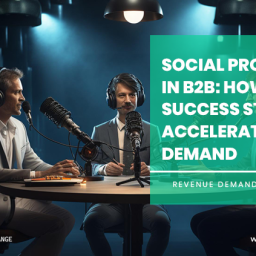Lead Nurturing Mistakes That Cost B2B Companies the Most

In B2B marketing, generating leads is only the beginning—nurturing them effectively determines whether they’ll become paying customers. A well-planned B2B lead nurturing strategy builds relationships, educates prospects, and guides them smoothly through the sales funnel. Yet, many companies still make critical errors that cause valuable leads to drop off.
These lead nurturing mistakes not only waste time and marketing budgets but also erode trust and credibility. Below, we explore the most common pitfalls that cost B2B businesses the most—and practical fixes to recover lost opportunities and improve conversion rates.
Ignoring Personalization in Communication
One of the biggest problems in lead nurturing is sending generic messages that fail to connect with the recipient. Business buyers expect personalized experiences that address their industry challenges and goals. A one-size-fits-all email campaign signals that you don’t understand their unique needs.
Effective lead nurturing goes beyond using a first name—it’s about segmenting audiences and delivering tailored content based on role, company size, and stage in the buyer’s journey. For example, a CTO will care about integration and security while a marketing manager will prioritize ROI and campaign analytics.
Fix: Use lead segmentation to group prospects by engagement, demographics, and behavior. Employ dynamic content and automated workflows that personalize messages to match each lead’s specific interests.
Overloading Prospects with Sales Pitches
A common mistake is pushing too hard for the sale. Sending back-to-back promotional emails or aggressive calls-to-action before a lead is ready often drives them away. Lead nurturing should be about education and trust-building, not instant conversion.
Prospects need time and value-driven content to understand your value proposition. When sales messages arrive too early, the relationship breaks down and unsubscribe rates rise.
Fix: Balance promotional content with value-driven insights—such as blog posts, industry reports, and webinars. Focus on addressing pain points and positioning your brand as a trusted advisor rather than a hard seller.
Failing to Align Marketing and Sales Teams
When marketing and sales teams don’t collaborate, leads fall through the cracks. Marketing might pass along poorly qualified leads or insufficient context, while sales might fail to share feedback required to refine nurture strategies. This misalignment is one of the most expensive and common lead nurturing mistakes.
Without alignment, inconsistent messaging and timing create friction that confuses prospects and wastes both teams’ resources.
Fix: Create a shared lead qualification framework and implement a lead scoring system. Schedule regular meetings between marketing and sales to review performance, feedback, and lead quality.
Neglecting Multi-Channel Engagement
Relying solely on email campaigns is a major error. Today’s decision-makers engage across LinkedIn, webinars, paid ads, industry communities, and more. Ignoring these touchpoints means missing opportunities to reinforce messaging and stay top of mind.
Multi-channel touchpoints help you meet prospects where they are and create a cohesive experience across platforms.
Fix: Adopt a multi-channel lead nurturing strategy that includes email, social outreach (LinkedIn), retargeting ads, and personalized website experiences. Keep messaging consistent and track cross-channel behavior so each interaction informs the next.
Not Using Lead Scoring Effectively
Without a proper lead scoring system, teams cannot distinguish between marketing-qualified leads (MQLs) and sales-qualified leads (SQLs). Some organizations rely on overly simplistic scoring or skip it altogether, which results in wasted effort chasing leads that are not ready to buy and ignoring those that are.
Lead scoring assigns value to behaviors—downloads, site visits, email clicks—and to firmographic signals like job title and company size. It helps both teams prioritize follow-ups and engage when intent is strongest.
Fix: Design a data-driven lead scoring model combining demographic and behavioral signals. Continuously refine the model using conversion data and feedback from sales to keep it accurate.
Inconsistent or Irregular Follow-Ups
Many leads go cold because companies fail to maintain consistent communication. Either follow-ups are too frequent—causing annoyance—or they’re too infrequent, allowing prospects to forget the brand. Irregular cadence interrupts trust-building and reduces conversion potential.
Fix: Build a structured follow-up cadence that balances persistence with patience. Use marketing automation to schedule touchpoints and trigger personal sales follow-ups when engagement indicates readiness.
Ignoring Content Mapping for Different Buyer Stages
Sending the same content to all leads, regardless of their buying stage, is a costly mistake. Top-of-funnel leads need educational resources while bottom-of-funnel leads require ROI evidence and comparisons to make purchasing decisions.
Fix: Map content to the buyer’s journey: awareness (industry insights, explainer blogs), consideration (comparison guides, webinars), and decision (case studies, ROI calculators, demos). Use this mapping to deliver the right message at the right time.
Not Tracking and Optimizing Nurture Campaigns
Launching a nurture campaign is not the endpoint. Failing to measure open rates, click-throughs, conversion rates, and lead velocity prevents teams from understanding what works. Without continuous optimization you may keep investing in ineffective tactics.
Fix: Define KPIs and use analytics tools to monitor performance. A/B test subject lines, CTAs, and content formats. Iterate quickly based on data to improve lead-to-customer conversion rates and return on investment.
Overlooking Post-Purchase Nurturing
Lead nurturing doesn’t stop at conversion. Neglecting existing customers means missing renewals, upsells, and referral opportunities. In B2B markets, long-term relationships are the core of sustainable revenue.
Fix: Implement a customer success-focused nurturing program: onboarding sequences, product tips, regular check-ins, and requests for testimonials or case study participation. Transform customers into advocates to fuel future growth.
Conclusion
In the competitive world of B2B marketing, lead nurturing is both an art and a science. Companies that treat nurturing as a relationship-building discipline—rather than an automated sales pipeline—see better conversion rates and higher lifetime value. Avoiding errors like poor personalization, premature sales pitches, team misalignment, and inconsistent follow-ups will dramatically improve your ability to convert leads into long-term clients.
By investing in segmentation, multi-channel engagement, data-driven lead scoring, and post-purchase nurturing, B2B companies can turn fleeting interest into loyal partnerships that drive sustainable growth.



